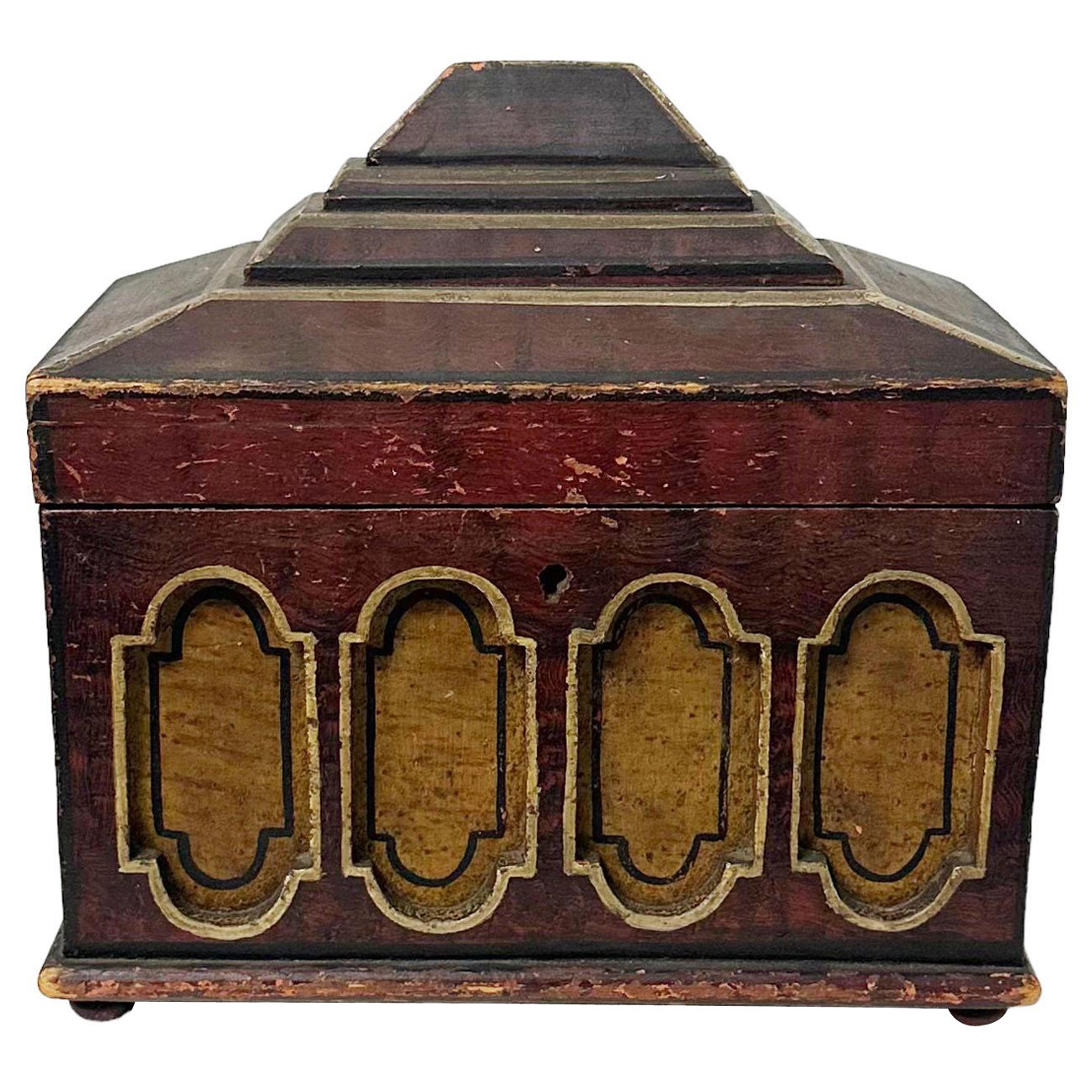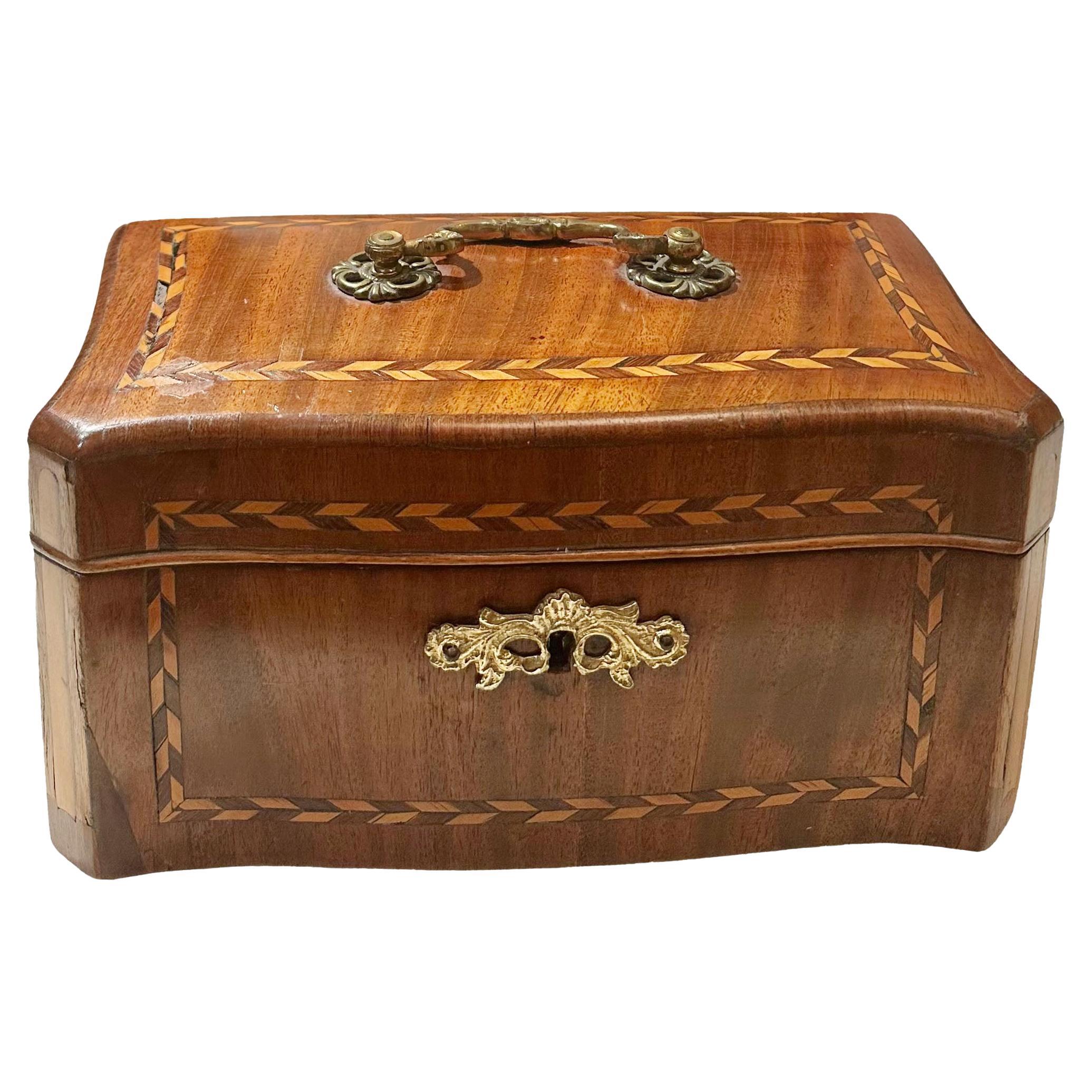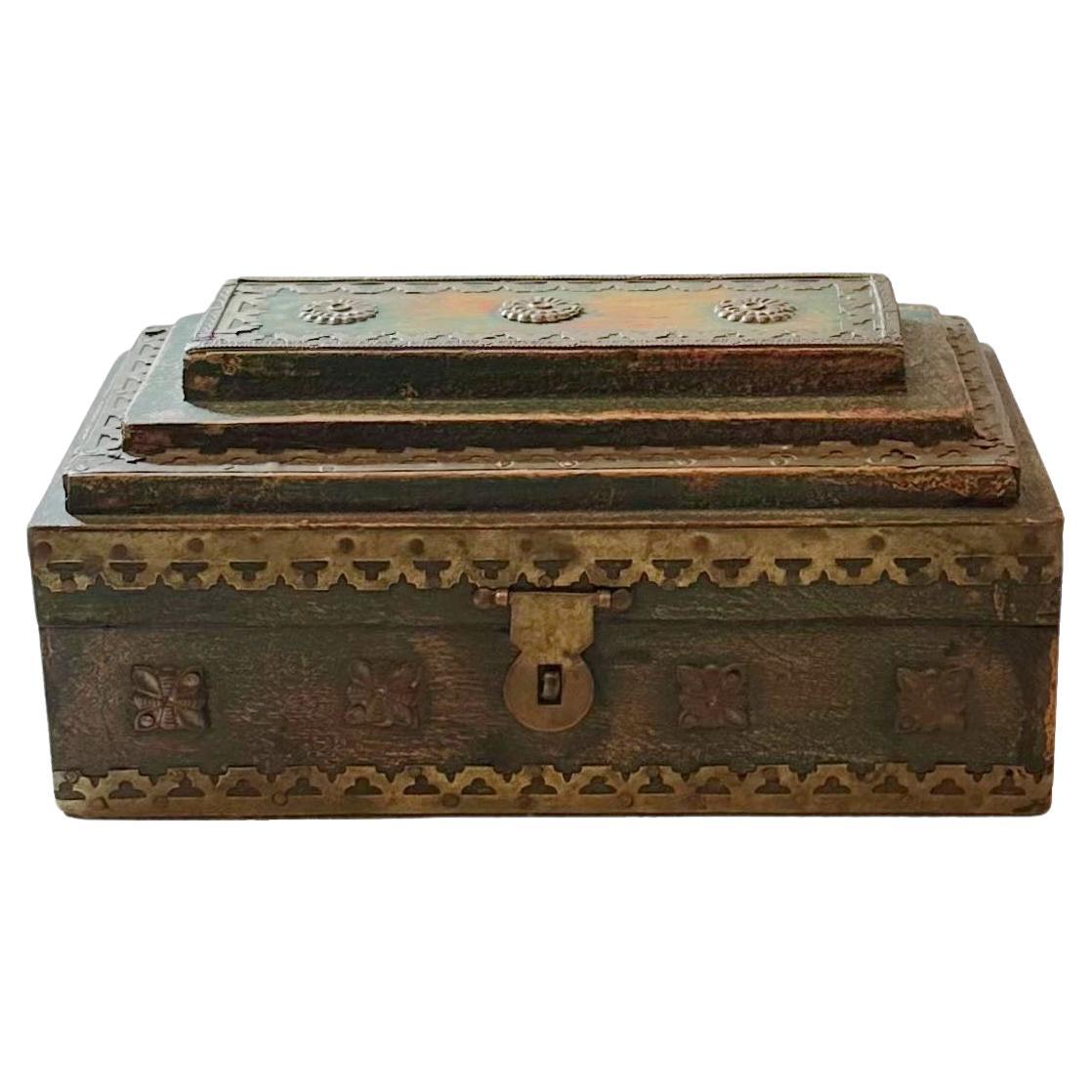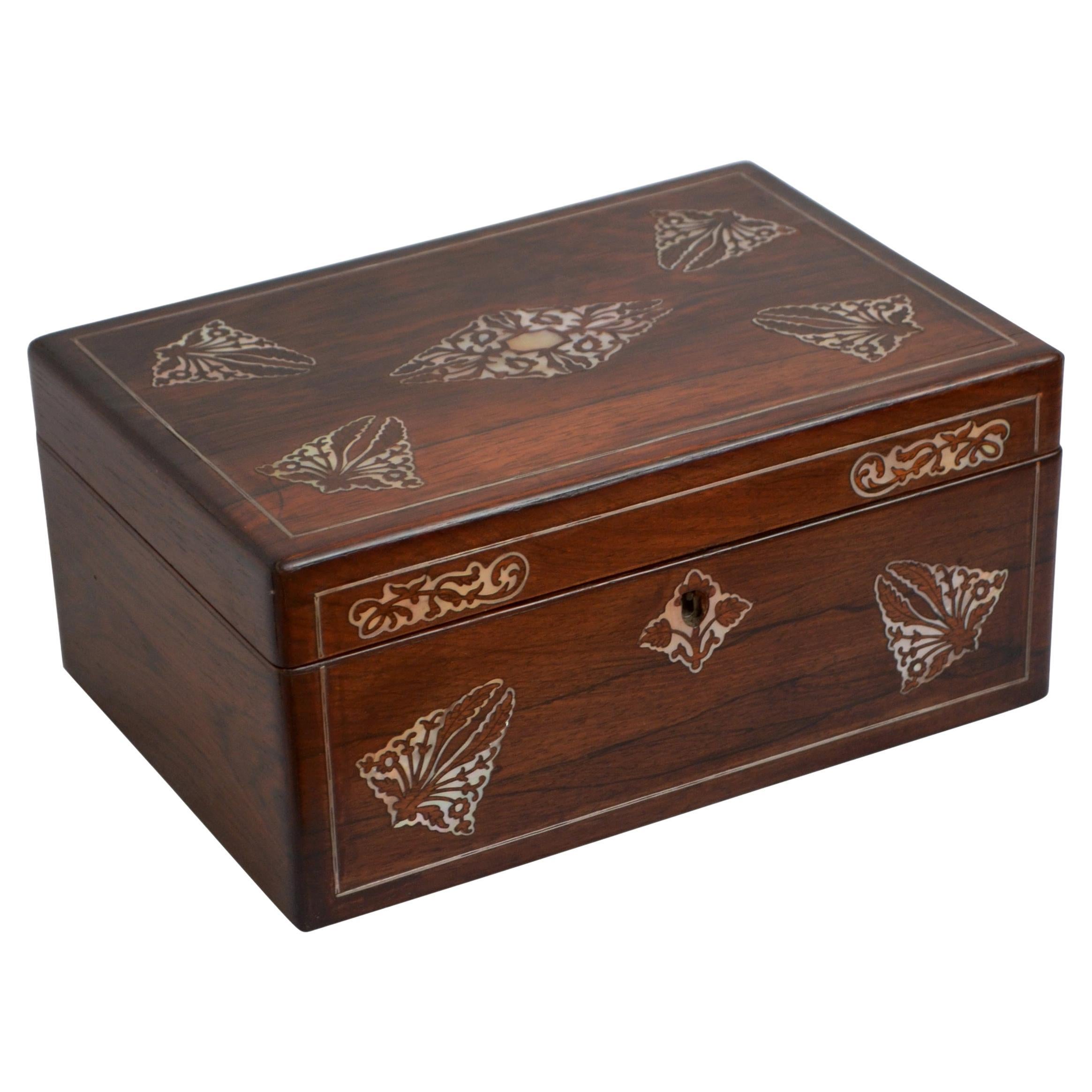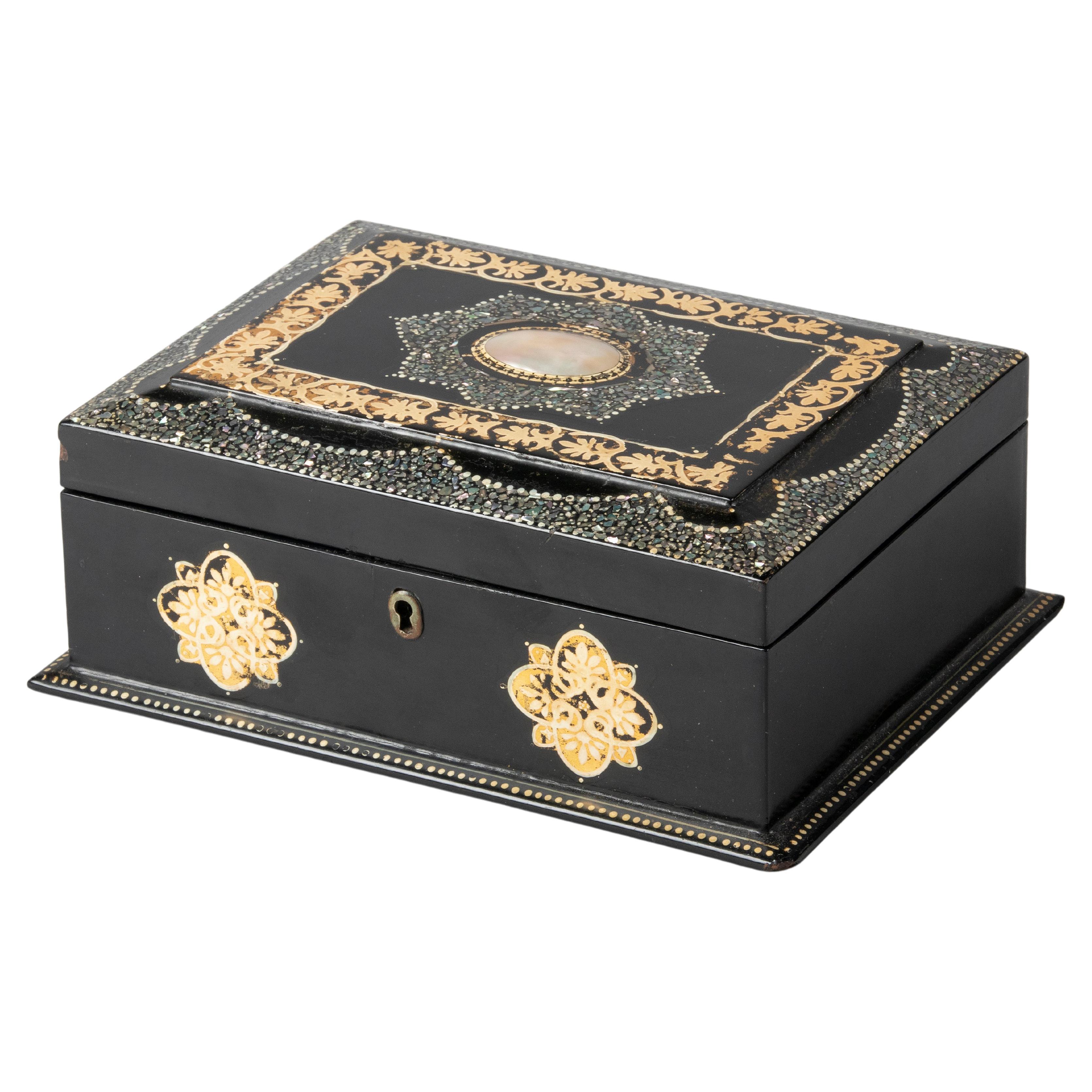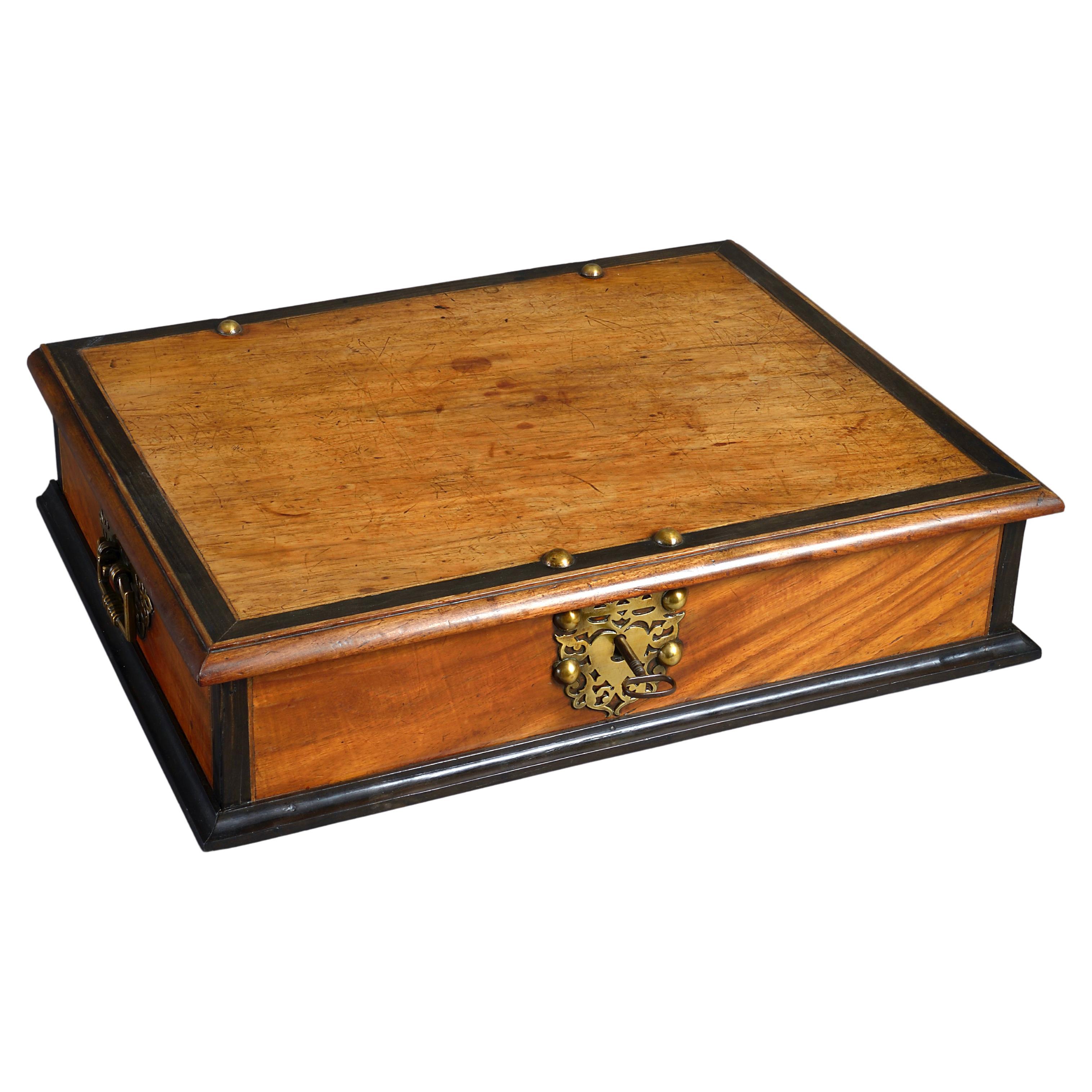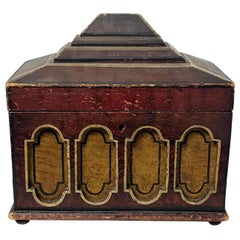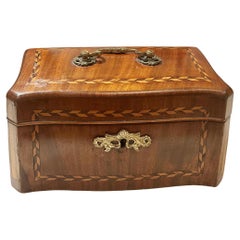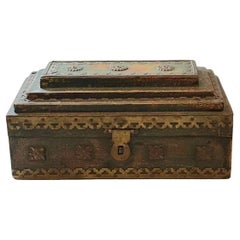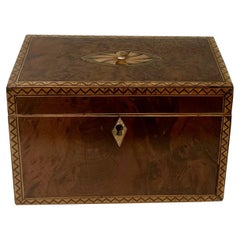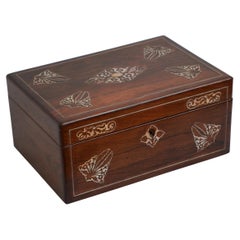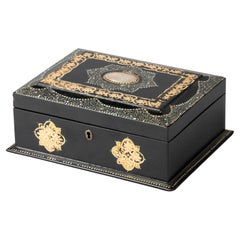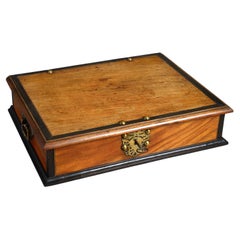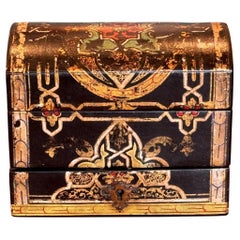Want more images or videos?
Request additional images or videos from the seller
1 of 11
Anglo Indian Trinket Box
$625
£481.80
€547.62
CA$890.53
A$968.81
CHF 511.23
MX$11,651.59
NOK 6,448.91
SEK 6,001.73
DKK 4,089.86
About the Item
Anglo Indian trinket box, nice size inlaid in brass made of rosewood. The interior is two and half inches deep. India, circa 1890s.
- Dimensions:Height: 4.5 in (11.43 cm)Width: 10 in (25.4 cm)Depth: 7 in (17.78 cm)
- Materials and Techniques:
- Place of Origin:
- Period:
- Date of Manufacture:Circa 1890s
- Condition:Wear consistent with age and use. Excellent condition with wear consistent with age.
- Seller Location:Tampa, FL
- Reference Number:1stDibs: LU6801243441782
About the Seller
5.0
Vetted Professional Seller
Every seller passes strict standards for authenticity and reliability
1stDibs seller since 2022
91 sales on 1stDibs
Typical response time: 10 hours
- ShippingRetrieving quote...Shipping from: Tampa, FL
- Return Policy
More From This Seller
View AllAnglo Indian Box
Located in Tampa, FL
19th century Anglo Indian box with raised painted arches on front, fantastic with a lot of patina. Does not have a key has small button feet.
Category
Antique 1880s English Decorative Boxes
Materials
Wood, Paint
$750
19th Century Regency Trinket Box
Located in Tampa, FL
19th century English regency trinket box or jewelry box. The interior tray is covered in original pink velvet, the velvet is in great condition. Has no key.
Category
Antique 1890s English Decorative Boxes
Materials
Velvet, Wood
19th Century Indian Box
Located in Tampa, FL
This exquisite antique box from 19th century India is a true treasure with its rich patina and traces of green paint. The brass studs add a real touch making it a genuine statement p...
Category
Antique 1880s Indian Decorative Boxes
Materials
Brass
English Early Tea Caddy
Located in Tampa, FL
English early large and beautifully decorated tea cadd with its compartments lids with ivory knobs top on the lids. Beautifully inlaid on the front of the escutcheon. The interior me...
Category
Antique 1810s English Tea Caddies
Materials
Wood
Anglo Indian Inlaid Work Box
Located in Tampa, FL
An anglo Indian workbox made of ebony. The tray lifts up from the box on the lid which is also inlaid in ivory and ebony and has a bone round disc that is signed New Bedford 1810. Th...
Category
Antique 1810s Indian Decorative Boxes
Materials
Bone, Ivory, Ebony
19th Century Small Indian Dowry Box
Located in Tampa, FL
A 19th century small Indian dowry box on wheels with fitted compartments. The door at the top that slides to the side. The fitted interior has a small...
Category
Antique 1890s Indian Decorative Boxes
Materials
Wood
You May Also Like
English Early Victorian Jewellery Box with Tray
Located in High Peak, GB
P080 An elegant antique early Victorian goncalo alves sewing box or jewellery box with beautifully inlaid front and hinged top enclosing new relined interior with lift up tray. This ...
Category
Antique 19th Century English Early Victorian Cigar Boxes and Humidors
Materials
Wood
19th Century Victorian Jewelry Box
Located in Casteren, Noord-Brabant
Beautiful antique Victorian jewelery box. The box is made of wood, covered with paper machee, lacquered black and inlaid with a mosaic of mother-of-pearl. Painted with gold colored decorations. The interior of the box is lined with blue silk fabric...
Category
Antique 1880s British Victorian Jewelry Boxes
Materials
Wood, Paper
Anglo-Indian Padouk Box
Located in London, GB
An Anglo-Indian brass-mounted padouk and ebony box, Ceylon, second half of the 18th century.
Category
Antique 18th Century Decorative Boxes
Materials
Brass
$2,969
19th Century Victorian Box
Located in Charlottesville, VA
A Victorian dresser box. Beautiful decoration.
Category
Antique 19th Century British Decorative Boxes
Materials
Paper
19th Century English Dresser Box
Located in High Point, NC
19th century English dresser box made from exquisitely grained rosewood. The box has wonderfully inlaid patterns on the top and front in...
Category
Antique 19th Century English Victorian Decorative Boxes
Materials
Ivory, Rosewood
19th Century Chinese Export Tea Caddy
Located in Charlottesville, VA
A black lacquered tea caddy. Great decoration and has interior compartment.
Category
Antique 19th Century Chinese Tea Caddies
Materials
Wood, Paint
More Ways To Browse
Limoges Bronze
Marble Tissue Box
Middle Eastern Mosaic Inlaid Jewelry Box
Russian Painted Boxes
Sadeli Box
Silver Filigree Box
Silver Filigree Boxes
Silver Spice Box
Sterling Silver Antique Pill Boxes
Straw Marquetry Box
Turtle Box
18th Century Wooden Boxes
Antique Brass Angle
Antique Dovetail Box
Antique French Napoleon Iii Crystal Box
Antique Walnut Writing Box
Biscuit Tins
Bone Box Brass
